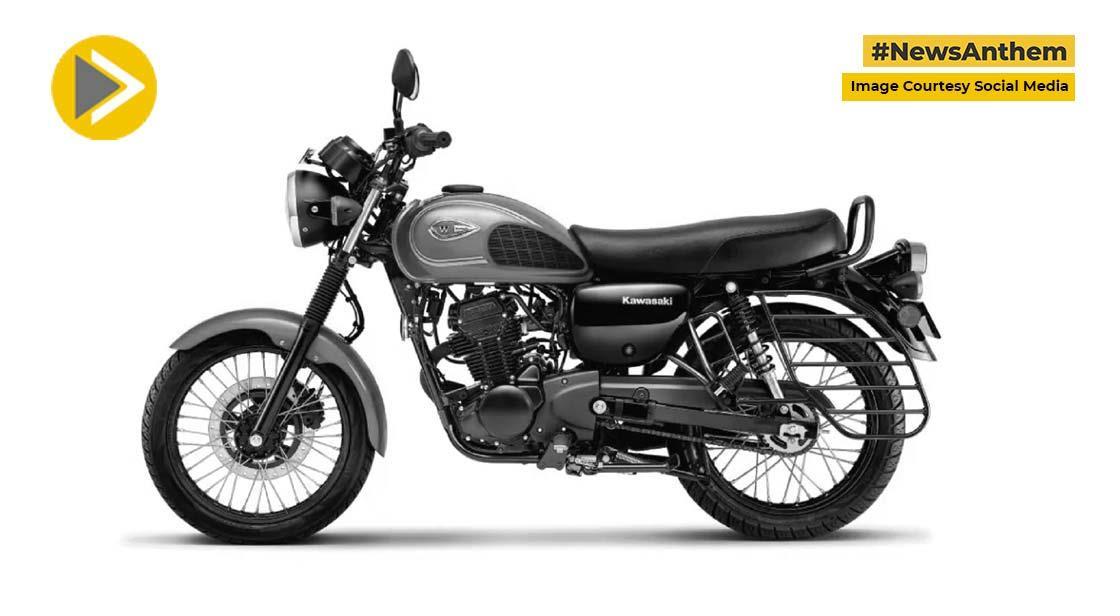Kawasaki Launches 2025 Z900 in India with Advanced Features and Fresh Design

News Synopsis
Kawasaki has officially introduced the 2025 Z900 in the Indian market, priced at Rs 9.52 lakh (ex-showroom). This updated version of the popular naked streetfighter brings a host of design refinements, feature enhancements, and mechanical upgrades. Imported to India as a Completely Built Unit (CBU), the Z900 continues to rival the likes of Triumph Street Triple R and the Ducati Monster in the premium performance bike segment.
2025 Kawasaki Z900: Refreshed Styling with the Same Sugomi DNA
Retains Aggressive ‘Sugomi’ Aesthetic
The design language of the 2025 Z900 remains loyal to Kawasaki’s signature ‘Sugomi’ philosophy, reflecting an aggressive stance and street presence. The motorcycle now sports a new LED headlamp, a sculpted fuel tank with sleek tank extensions, and a sharper tail section that houses a newly designed LED taillight.
Despite the aesthetic refresh, the rider triangle remains unaltered, with enhanced seat cushioning ensuring improved comfort for both rider and pillion.
2025 Kawasaki Z900: Feature Upgrades and Advanced Electronics
New TFT Display and Connectivity Options
One of the most significant updates is the introduction of a 5-inch color TFT display that supports Bluetooth connectivity. Riders can access turn-by-turn navigation and other bike metrics through the Kawasaki Rideology app, enhancing convenience and ride planning.
Enhanced Safety and Rider Aids
The Z900 is now equipped with a robust set of electronics:
-
Two power modes
-
Ride-by-wire throttle system
-
Integrated ride modes
-
Cruise control
-
Bi-directional quickshifter
-
Cornering traction control
-
Cornering ABS
These updates significantly improve the motorcycle’s handling, safety, and overall riding experience.
2025 Kawasaki Z900: Engine, Chassis and Hardware Details
Performance Meets Emission Compliance
Powering the 2025 Z900 is the familiar 948cc inline-four-cylinder, liquid-cooled engine, which now complies with the stringent Euro 5+ emission norms. It delivers 123 bhp and 97.4 Nm of peak torque, mated to a 6-speed gearbox.
Upgraded Braking and Tyres for Better Dynamics
The braking system has been revised, featuring Nissin calipers paired with dual 300mm front discs, replacing the older axial setup. Additionally, the motorcycle now rides on Dunlop Sportmax Q5A tyres, which offer enhanced grip and performance over the previous Sportmax Roadsport 2.
Suspension and Frame
The Z900 retains its steel trellis frame, supported by an adjustable USD fork at the front and a monoshock at the rear. The bike continues to run on 17-inch alloy wheels, ensuring stability and precision at high speeds.
Summary
The 2025 Kawasaki Z900 is a well-rounded upgrade that balances aggressive styling with cutting-edge technology and rider-focused enhancements. With improved ergonomics, safety features, and performance upgrades, the Z900 continues to be a formidable contender in the middleweight naked sports bike category in India.
History of Kawasaki company
Kawasaki, formally Kawasaki Heavy Industries, Ltd. (KHI), is a sprawling Japanese multinational corporation renowned for its incredibly diverse range of products. From massive ships and trains to iconic motorcycles and industrial robots, Kawasaki's history is a testament to continuous innovation, diversification, and engineering prowess, spanning over a century.
1. The Shipbuilding Foundation (1878-Early 1900s):
-
Founder's Vision (1878): The company's origins trace back to Shōzō Kawasaki. Born in 1836, Kawasaki had a deep connection to the marine industry and witnessed several shipping disasters. Believing that modern, technologically advanced ships were crucial for Japan's future, he established the Kawasaki Tsukiji Shipyard in Tokyo in 1878. His initial focus was on building Western-style oceangoing steel ships.
-
Incorporation (1896): As demand for modern ships grew, particularly during the Sino-Japanese War of 1894, Kawasaki decided to formalize his enterprise. In 1896, the company was incorporated as Kawasaki Dockyard Co., Ltd., with Kojiro Matsukata appointed as its first president.
-
Early Diversification: Even in its early years, Kawasaki began to look beyond just shipbuilding. In 1906, it opened the Hyogo Works, which started fabricating locomotives, freight cars, passenger carriages, and bridge girders. The same year, it began producing marine steam turbines.
2. Expansion into Heavy Industries and Aircraft (Early 1900s-WWII):
-
Pioneering Aircraft (1918): Kawasaki entered the nascent aviation industry relatively early, establishing its Aircraft Department at the Hyogo Works in 1918, just 15 years after the Wright brothers' first flight. It soon began manufacturing aircraft, including Japan's first metal aircraft. This division would later become Kawasaki Aircraft Co., Ltd. in 1937.
-
Broadening Portfolio: Throughout the 1920s and 1930s, Kawasaki continued to diversify, with departments splitting off to form independent companies under the Kawasaki umbrella. This included separate entities for rolling stock, marine freight (Kawasaki Kisen Kaisha Ltd., or K-Line), and steelmaking.
-
Wartime Production: During World War II, like many major industrial companies in Japan, Kawasaki played a significant role in the war effort, becoming a major builder of combat aircraft, notably the Ki-61 Hien fighter, and other military equipment.
3. Post-War Reconstruction and Consumer Products (1945-1970s):
-
Reorganization: After World War II, the company was subject to reorganization by the U.S. occupation authorities, leading to the temporary breakup of some divisions.
-
Return to Shipbuilding Dominance: By the 1950s, supported by a new government shipbuilding agenda, Kawasaki played a key role in Japan's emergence as the world's largest shipbuilder, producing large freighters and supertankers.
-
Entry into Motorcycles (1950s-1960s): While the aircraft division had been developing motorcycle engines since 1949, the first complete Kawasaki motorcycle was produced in 1954 under the Meihatsu brand (a subsidiary of Kawasaki Aircraft). In the early 1960s, Kawasaki acquired the ailing Meguro Manufacturing, a motorcycle manufacturer, and fully entered the motorcycle market. Iconic early models like the 1969 H1 Mach III (a high-performance 2-stroke) helped solidify Kawasaki's reputation for powerful bikes. This marked the beginning of the consumer-facing "Kawasaki" brand that many recognize today.
-
Re-merger and Modern Name (1969): To better compete in the evolving global market, Kawasaki Dockyard, Kawasaki Rolling Stock Manufacturing, and Kawasaki Aircraft merged in 1969 to form the present-day Kawasaki Heavy Industries, Ltd. This consolidation brought together its vast engineering expertise under one corporate entity.
-
Diversification Continues: By the late 1960s and into the 1970s, Kawasaki began to strategically withdraw from large-scale shipbuilding, shifting focus towards other rapidly growing sectors. It launched the first Japanese-made industrial robot (Kawasaki-Unimate 2000) in 1969 and introduced its first Jet Ski® watercraft in 1973 (the brand name "Jet Ski" later became synonymous with personal watercraft).
4. Global Presence and Advanced Technology (1980s-Present):
-
ATVs and Utility Vehicles: In 1981, Kawasaki introduced its first ATV, the three-wheeled KLT200, followed by utility vehicles (MULE) in 1988.
-
High-Performance Motorcycles: The 1980s and beyond saw the development of legendary motorcycle models like the GPz900R (the original Ninja) in 1984, establishing Kawasaki's dominance in the sportbike segment.
-
Expansion in Robotics and Energy: Kawasaki continued to be a leader in industrial robotics, developing advanced automation systems. It also significantly expanded its presence in energy plants, gas turbines, and environmental solutions.
-
Infrastructure Projects: Kawasaki's civil engineering and construction machinery division has been instrumental in major infrastructure projects worldwide, including building tunnel boring machines for the Eurotunnel and contributing to the Akashi Kaikyō Bridge.
-
Transportation Systems: Beyond motorcycles, Kawasaki remains a major producer of rolling stock, including components for Japan's iconic Shinkansen (bullet trains) and subway cars for major international cities like New York.
-
"Group Vision 2030": In recent years, Kawasaki Heavy Industries has outlined its "Group Vision 2030," focusing on three key fields: "A Safe and Secure Remotely-Connected Society," "Near-Future Mobility," and "Energy and Environmental Solutions," emphasizing sustainability and advanced technological innovation.
Today, Kawasaki Heavy Industries is a technological conglomerate with a global footprint, leveraging its long history of heavy industry expertise to deliver diverse products and solutions across land, sea, and air. Its range of products, from consumer-friendly motorcycles and ATVs to sophisticated aerospace components and industrial machinery, showcases its enduring commitment to engineering excellence.









